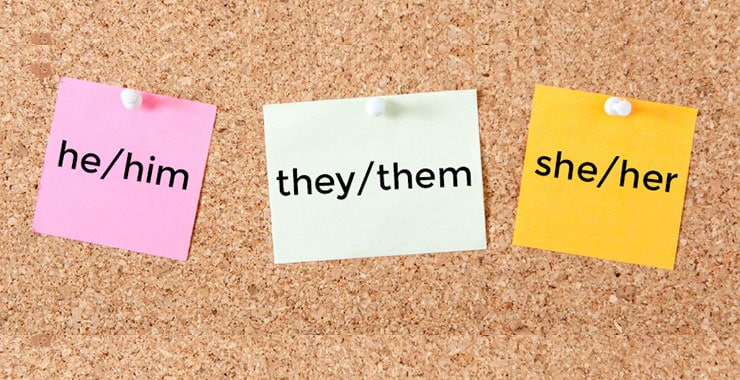Understanding Singular They

We all learned during grammar classes in elementary school that “they,” “them,” and “their” can be used as singular pronouns when a person’s gender is unknown. For example, if someone finds a phone and doesn’t know who it belongs to, the person might say “I wonder if they realize their phone is missing yet. I will hold it in safekeeping for them until they come back.”
Some older generations learned that we should default to using “he” as the pronoun in that scenario, and you might run into one of those grammar sticklers in the comment section of social media posts vociferously proclaiming that using singular they is PC, as if they are an English teacher ready to break out a red grading pen.
That’s because in 1745, “A New Grammar” was published that called for “he” to be used as a universal singular pronoun. Interestingly, that book was written by Ann Fisher, a woman who stated that “The Masculine Person answers to the general Name…as, Any person who knows what he says.” Sadly, that sexist idea caught on. Soon after, people were using masculine pronouns to include all people.
In an attempt to ditch the sexist language that literally ignores half the population, we began seeing the enlightened use of “he or she” or the oddly punctuated “he/she” as an attempt to be more inclusive. Unfortunately, that is really clunky and repetitive. You might have learned it in school, but thankfully most people aren’t interested in using it in real life.
While the use of “he” to refer to anyone whose gender wasn’t known was in vogue for the last few centuries, the first known written text using singular they dates all the way back to 1375! “William and the Werewolf” is a Middle English poem published that year using they to refer to one person. It was also used by other writers of the time, including Geoffrey Chaucer and Shakespeare, so it was likely in common usage in every day speech.
Fast forward several centuries and we have finally landed in a space where transgender folks are visible and non-binary identities are finally being recognized. For the last decade, it has become common to hear people refer to themselves or nonbinary friends or family using “they.” And in 2019, Merriam-Webster made it the Word of the Year to encourage more people to get on board.
“But what about using “they” with verbs?” you might be asking. Use a plural verb form with the singular pronoun “they,” for example, write “they are” not “they is.” And even if you are speaking about a person who you know uses singular they as their pronoun, if you refer back to them by name or with another descriptor (“my friend who plays piano”), use a singular verb form with a singular noun. So it would be “My friend Jessica who plays piano is coming to visit. They are going to be a guest with a local musical group.”
Practicing using they as a singular pronoun is pretty easy. You are already using it in your everyday language without even giving it thought. So when you are introduced to someone who uses “they” as their pronoun, make a conscious effort to use it correctly and don’t worry about old grammar rules. They are worth the effort!
